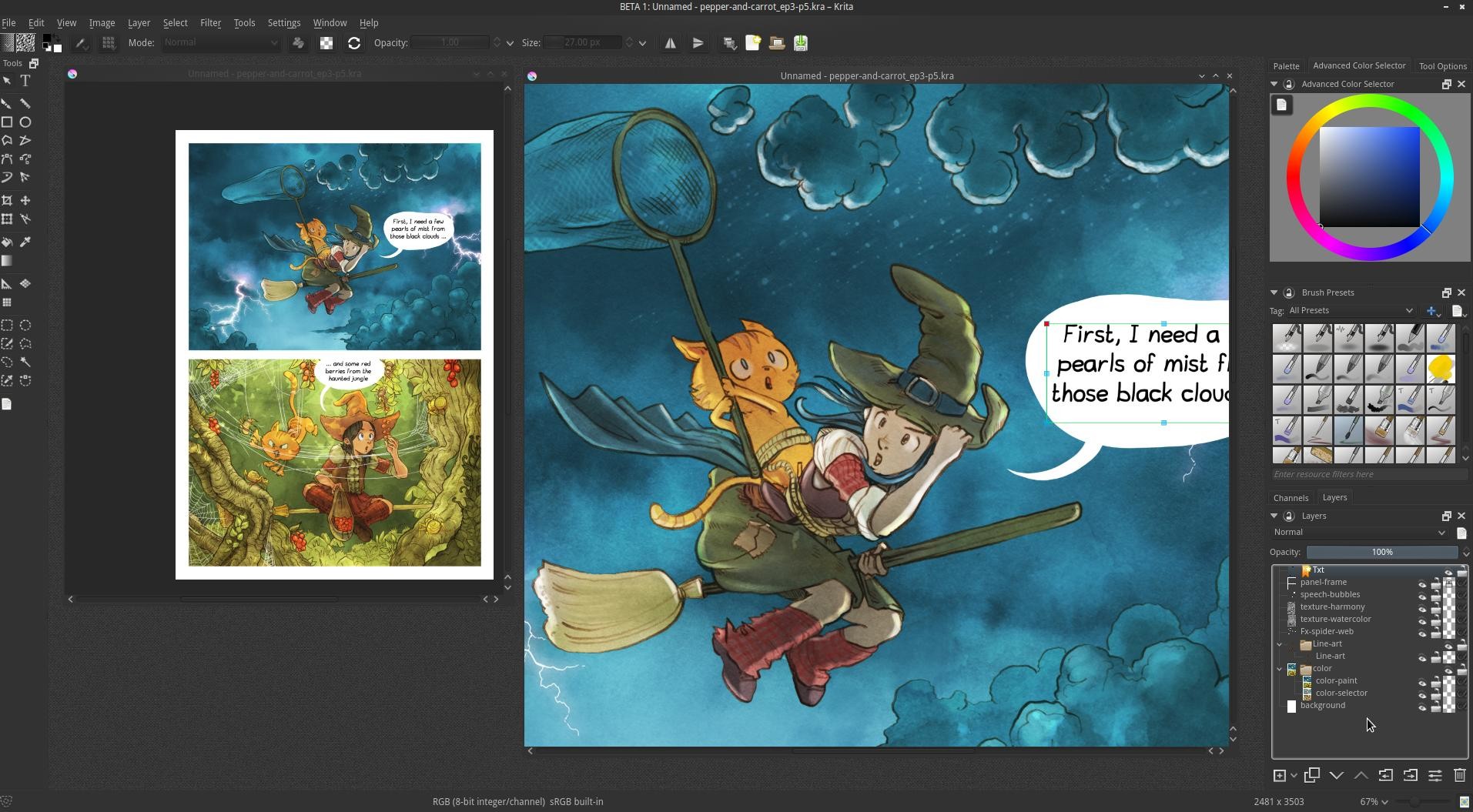


With 1.6, we also claimed that Krita had become ready for professional work. At the 2006 Akademy in Dublin, Krita received the Best Application Akademy Award. Krita 1.6 was the last release of Krita using Qt 3.x and the KDE 3.x libraries.

High channel depths (16 and 32 bits float), and color models like CMYK, L*a*b, LMS and a dedicated simulation of watercolors, scripting in Python and Ruby using Kross were added. With Krita 1.5, support for color management arrived. Krita 1.4 was first reviewed in Linux Format 71 and in in Linux Reviews. This is the very first public release of Krita. A backup of the php-based website is is available on github. This means that for the KOffice part of Krita’s history there are no direct links to announcements and changelogs anymore. The cms-based successor of the website was taken down in an act of vandalism by the last remaining KOffice developer. The php-based website was taken down and later on removed from KDE’s subversion repository. The KOffice website was first implemented in php, then moved to a CMS. Part of that work was yet another rewrite of the entire core engine.

08-07-1999: the first commit is pushed:.31-04-1999: the KImageShop project is started by Matthias Elter.24-04-1999: Matthias Ettrich proposes to start a new application, next to the KImage application already in KOffice.Matthias Ettrich presents his paper on “Multi Toolkit Programming: Interoperatibility of different GUI toolkits for the X Window System”, meant to show how easy it would be to refactor existing applications using xforms or gtk or motif or… to Qt. The project, starting out as a patch to Gimp, continued as KImageShop, never released as Krayon, ending up as Krita, Krita’s history goes back to 1998.


 0 kommentar(er)
0 kommentar(er)
